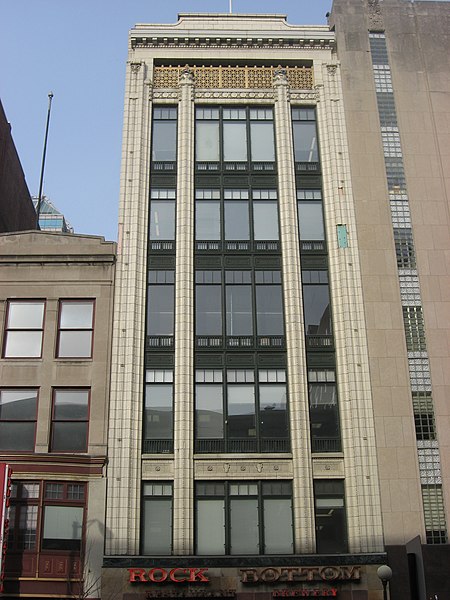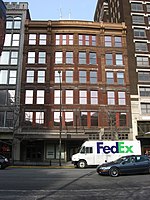Selig's Dry Goods Company Building
Beaux-Arts architecture in IndianaCommercial buildings completed in 1924Commercial buildings in IndianapolisCommercial buildings on the National Register of Historic Places in IndianaIndianapolis stubs ... and 4 more
Individually listed contributing properties to historic districts on the National Register in IndianaMarion County, Indiana Registered Historic Place stubsNRHP infobox with nocatNational Register of Historic Places in Indianapolis

Selig's Dry Goods Company Building, also known as Morrisons/Em-roe Sporting Goods Company, is a historic commercial building located at Indianapolis, Indiana. It was built in 1924, and is a seven-story, rectangular, Beaux-Arts style building with a white terra cotta and aluminum front facade. It was remodeled in 1933. The building features tinted plate glass windows and a terra cotta Roman thermal window-like screen at the top floor. The building housed the Selig's Dry Goods Company, in operation until 1933.: 3–4 It was listed on the National Register of Historic Places in 1984. It is located in the Washington Street-Monument Circle Historic District.
Excerpt from the Wikipedia article Selig's Dry Goods Company Building (License: CC BY-SA 3.0, Authors, Images).Selig's Dry Goods Company Building
Indianapolis Cultural Trail, Indianapolis
Geographical coordinates (GPS) Address Nearby Places Show on map
Geographical coordinates (GPS)
| Latitude | Longitude |
|---|---|
| N 39.767222222222 ° | E -86.158333333333 ° |
Address
Washington and Meridian
Indianapolis Cultural Trail
46282 Indianapolis
Indiana, United States
Open on Google Maps










